Power Platform in Plain English
What is the Microsoft Power Platform? Where is it headed? Read this to learn what you need to know about Microsoft’s service offerings and what it means for you in the future.
Microsoft has been making huge efforts in the last few years to build a more connected way to work. With the Power Platform, we can see all of the pieces that make up the puzzle of that bigger picture. Where is Microsoft heading? What does the future of work look like according to Microsoft?
We’ve broken down all of the components of the Power Platform into descriptions you can understand and alongside each, given our take on what we think this means for the future of work. While none of us can know the future, we’ve spent close to 2 decades in web and mobile development, and our experience has given us the ability to anticipate what the capabilities of each piece can mean for you in the years to come.
| Product | What is it? | What you should know | Where is it headed?* |
|---|---|---|---|
| A chatroom for work | Teams wants to be the underlying platform where you do all of your work. | Microsoft is trying to let you do 100% of your workplace computing inside of Teams. Expect to see it integrated everywhere you do work. | |
| Graphs and data analysis | Power BI can analyze data from many different data sources. | Power BI is seeing more use of AI to try and make it easy to spot trends and unique items in your data. Expect AI to play a big part in this product. | |
| Low-Code Applications | Power Apps let you build apps that used to take months of effort in just hours of time. | Power Apps will continue to improve and make it easier for less skilled developers to build apps. | |
| Drag and Drop process automation | Power Automate works in the background to perform automated tasks that non-developers can administer. | Power Automate will add many new connectors and will blur the line between programming and low-code development. | |
| Pre-programmed chatbots | Virtual agents uses AI to build helpful chatbots that allow you to reduce support workloads. | If AI continues to improve, these chatbots will become much more useful. Expect the pace of change to lag behind platforms like Amazon Alexa. | |
| Common database to store all of your company data | Dataverse is much more than just a database. By utilizing dataverse you have many benefits of mature products instantly available. | Dataverse is a critical component for Microsoft’s plans. Expect their best engineers to make this platform a very viable location for storing all of your company data. | |
 Common Data Model Common Data Model | Sensible defaults for how company data is structured | Use of Common Data Model is optional, but if you can fit your company data to it, you’ll gain access to many apps and products right away. | Microsoft would love to have this be a world-wide standard and may potentially promote the common data model as an open model for others to use outside of Microsoft. |
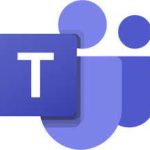
/cdn.vox-cdn.com/uploads/chorus_asset/file/19344713/microsoftteams.jpg)
What is Microsoft Teams?
Microsoft Teams is a chat app, first and foremost. Companies use it to allow workers to chat with each other, either via chatrooms they call “Channels” or one-on-one messaging they call “Chats”. Different groups of users are organized into “Teams”, each of which allow primarily shared chatrooms for these groups to collaborate.
Within each “Team”, there are quite a few possibilities for more than just chat, but most people only use the chat feature.
What’s available other than chat?
Video Conferencing: In addition to the one-on-one and group messaging features, there are features available for video and audio conferences (again, in one-on-one or group settings.) These video/audio chats offer features like a collaborative whiteboard and several display options to show participants in different ways. The features here are comparable to whatever you’re familiar with in other video calling platforms.
File Sharing: Each “Team” is setup with a related SharePoint site where files can be shared and additional SharePoint features are available. These shared files are available for everyone inside each “Team”.
App Integration: Teams allows different apps to inject content into both group and one-on-one chats. This injected content offers a way for applications to expose features and functionality to users inside Teams in ways that allow them to quickly interact with the app. For example, one of the most popular app integrations is “Approvals”, which sends a simple message to groups or an individual along with an “Approve” or “Reject” choice. Users can press those buttons to mark and approval as approved or rejected.
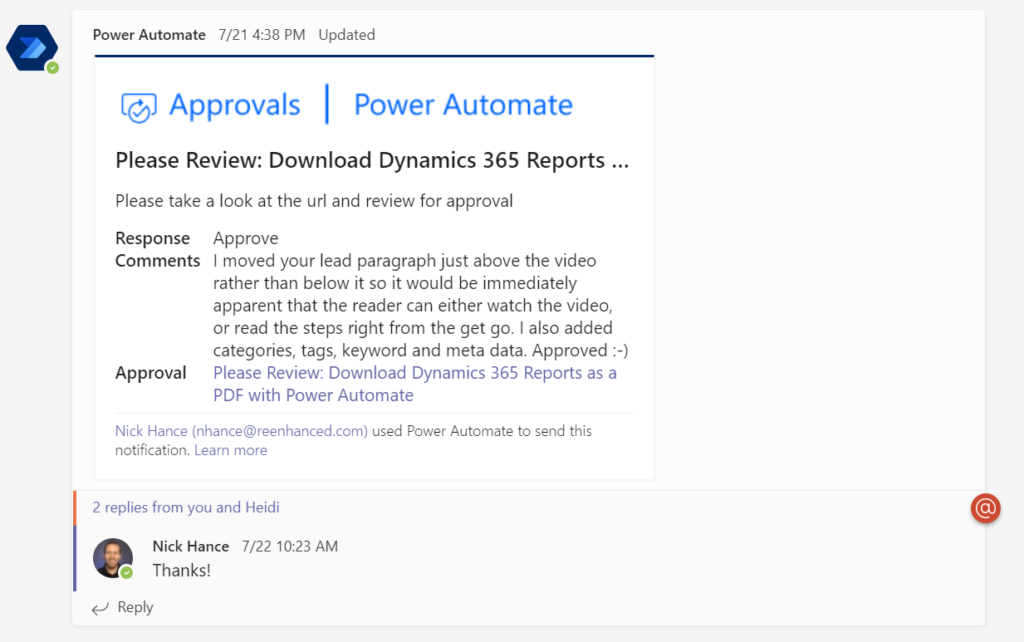
The app integration and file sharing updates are all marked inside of the chat which becomes useful in a group because it allows a record of collaboration to be stored alongside the updates. See the image above for an example of how the Approval is seamlessly integrated alongside the relevant communication.
Where is Microsoft Teams heading?
With over 140 million users using Teams every day, Microsoft is attempting to turn Teams into a platform for work. What this means is that you should expect Microsoft to offer every product and service inside of Teams as a priority item. Microsoft believes the future of work looks a lot like Microsoft Teams and the capabilities of combining a chat application alongside embedded web content seems like they have a very good chance of achieving that goal.
Teams is a web application. This means it runs in your web browser but also has downloadable apps for phones and desktops. However, because it is a web application first, that means the apps you install also have most of the capability of a web browser. This means that Teams can embed content, just like any web page, into the Teams experience.
In the coming months and years, expect Microsoft to leverage their very large userbase on Teams as the underlying platform through which you’ll access most of their other services. Every other item we discuss here in the Power Platform is built to work very well within Microsoft Teams.


What is Power BI?
Power BI is a tool for building graphs, tables, pictographs and others. It lets you visualize your data from a wide range of different data sources and perform analyses that show can trends and insights you might not see if you look at just one data source.
It is what Microsoft wants you to use to learn from the data your company has collected. It can help you understand where things might be going with your organization by giving you tools to spot trends and visually represent what your company is doing.
You can use it to build static reports for use inside of spreadsheets or to build living dashboards that are kept up to date in real-time. These reports can be viewed on any device and can be refined to show only the data necessary to the people who need to see it. Done correctly, it can help teams keep everyone focused on the most important parts of their job.
Where is Power BI heading?
Using Power BI can be complicated. We expect Microsoft will continue to try and simplify the way you build reports so that less specialized knowledge is necessary to learn from your collected data. To do this, Microsoft will bring AI capabilities to the forefront and use that to help you build reports that might be helpful and to spot trends you might not think to look for.
If Microsoft’s AI capabilities expand significantly, they’ll be of most use within PowerBI because AI could do a better job with large datasets than most humans could hope to.


What are Power Apps?
Power apps are low-code applications that can display data and perform tasks on any device type. Power Apps are essentially small web applications meaning that they can work on any device with a web browser. Building Power Apps is billed as a low-code way to develop, but the true complexity of application development is only partially obfuscated. Advanced features, high performance, or a flawless experience for end users still requires a fairly skilled computer user to build, but maybe not as skilled as a true software developer.
For unknown reasons, Microsoft has bundled “Model-Driven” apps alongside “Canvas” apps even though the two are very different both in usage and in design.
What are Model-driven apps?
Model-Driven apps are a way to manage Dataverse data. In these, you’re offered the ability to embed visualizations (Dashboards) of the data or tables and forms that allow you to do familiar operations like Create, Review, Update, and Delete records stored within Dataverse tables.
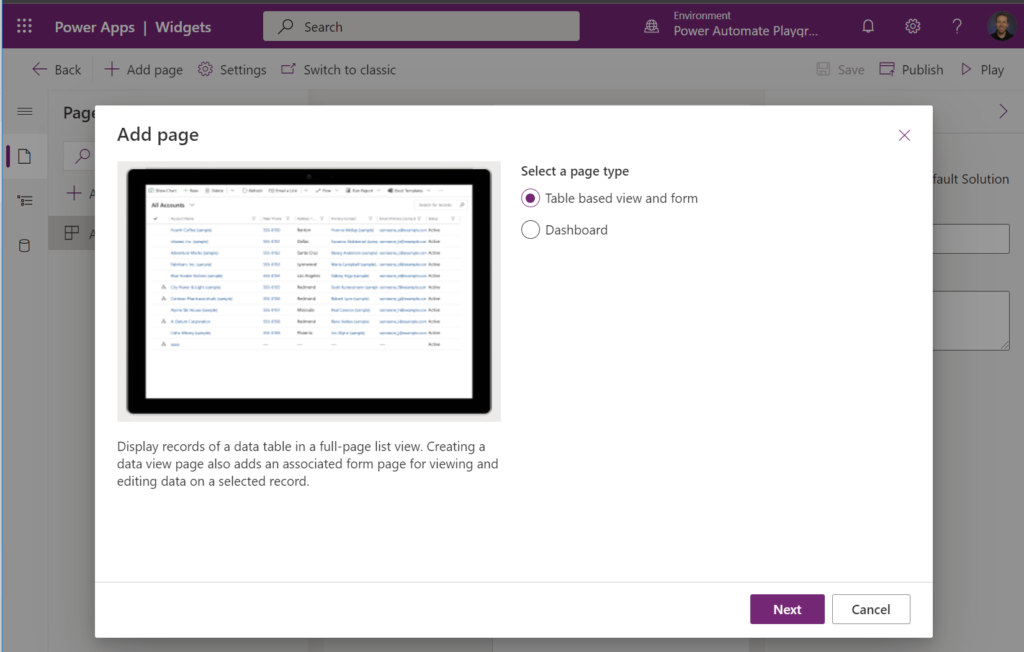
All of the security around who has access to what data is centrally controlled on top of Dataverse, so no matter who is assigned to use a Model-Driven app, they’ll never have more access than allowed by their security roles. This centralization of security is good as it offers your organization a way to have confidence in data security.
Model-Driven apps follow a familiar look-and-feel that is identical to what you may be familiar with if you’re a user of Microsoft’s Dynamics suite of software.
What are Canvas Apps?
Canvas apps are completely different from Model-Driven apps and are so distinct that it feels strange to have them bundled alongside each other. A canvas app starts with a blank canvas and allows users to drag-and-drop components on top of it.
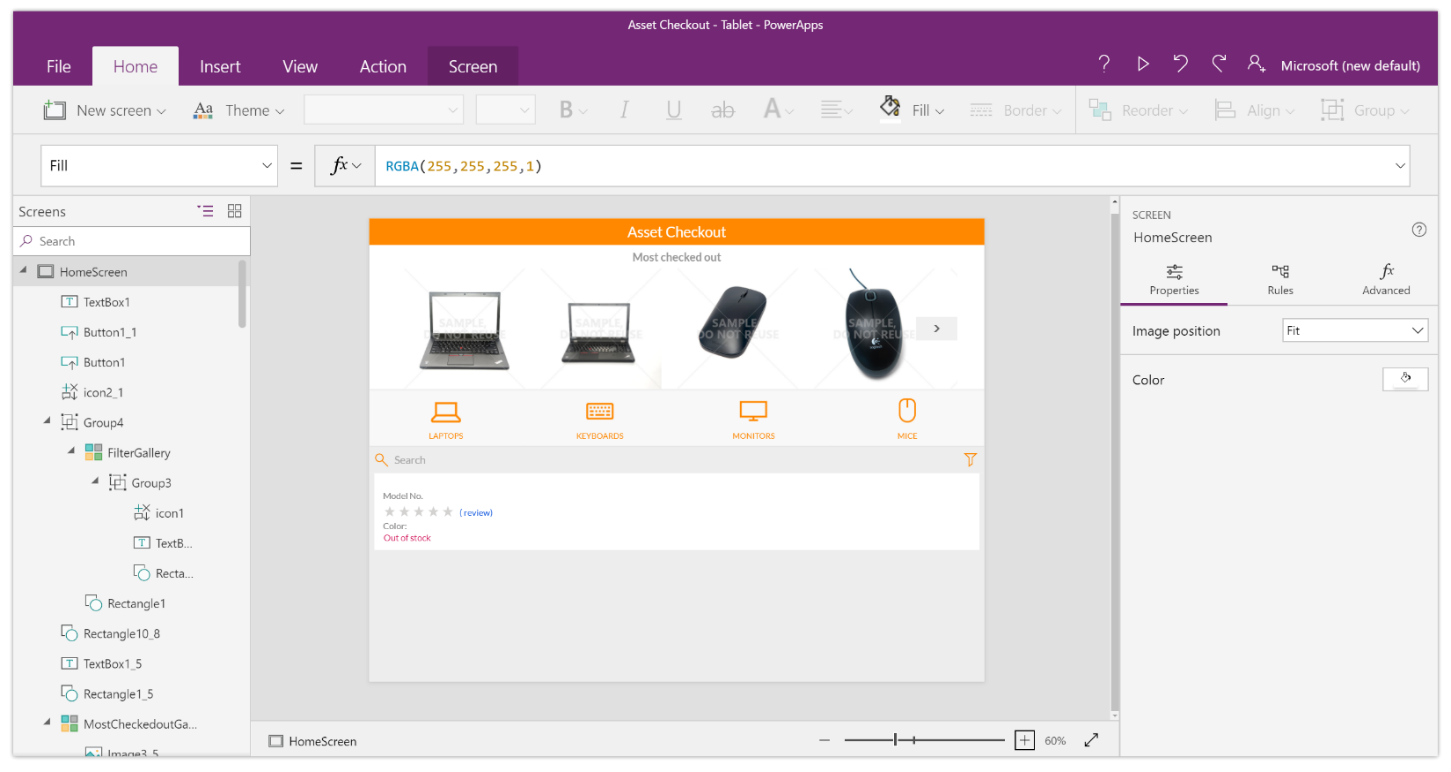
While it requires moderately little training to build a Canvas app, you will still need some ability to think like a software developer. The flexibility offered by Canvas Apps mean that there is some direct exposure to the complexity of applications, so you can expect apps to get to 80% of functionality very quickly, with the remaining 20% taking much longer to get your apps just right.
Canvas Apps offer the ability to consume and display data, but all actions upon that data and any behavior outside of the interface of the Canvas App itself is handled through Power Automate. By running a Power Automate flow inside of a Canvas App, you can offer a visual interface that lets users decide which flows to run and on what data is appropriate.
Canvas apps are, in general, a good enough experience that they should be considered as a viable option for small applications and prototypes. Any apps with a large amount of data or complex needs would still be better as a custom application. For rapid prototyping, Canvas Apps offer an phenomenal experience.
Where are Power Apps heading?
That last 20% of building an application will take Microsoft years to simplify. Building applications is complex and it will take dedicated effort and deep support for complex options for Microsoft to truly make building apps something that can be done without a developer. Power Apps represent a fundamental shift towards the citizen developer and will allow more people than ever to build apps within the ecosystem.
You can expect Microsoft to both decrease the cost to use Power Apps and simplify the experience in an effort to get as many users on the platform as possible. Microsoft stands to make significant amounts of money on the long tail of users who, once they build Power Apps, find themselves facing significant switching costs to migrate to another system.
Microsoft, at this time, is trying to cast a wide net to get users onto the power platform. It’s unknown if Microsoft’s relationships with their partners (MSPs, ISVs, & CSPs) is something they’ll retain or if they believe they can build apps and provide tools good enough to directly acquire customers. Our gut says the partner relationships are more important than Microsoft realizes and they’ll need to set clear expectations as Power Apps mature so that partners can sell on top of the platform in ways that provide the right motivation.
We expect Power Apps to be a big part of the upcoming hype cycle for no-code/low-code technologies. If Microsoft isn’t too greedy, it can be the platform that powers the future of work and keep their dominant position in the post-Windows world. Giving their partners room to succeed is a key part of this strategy.
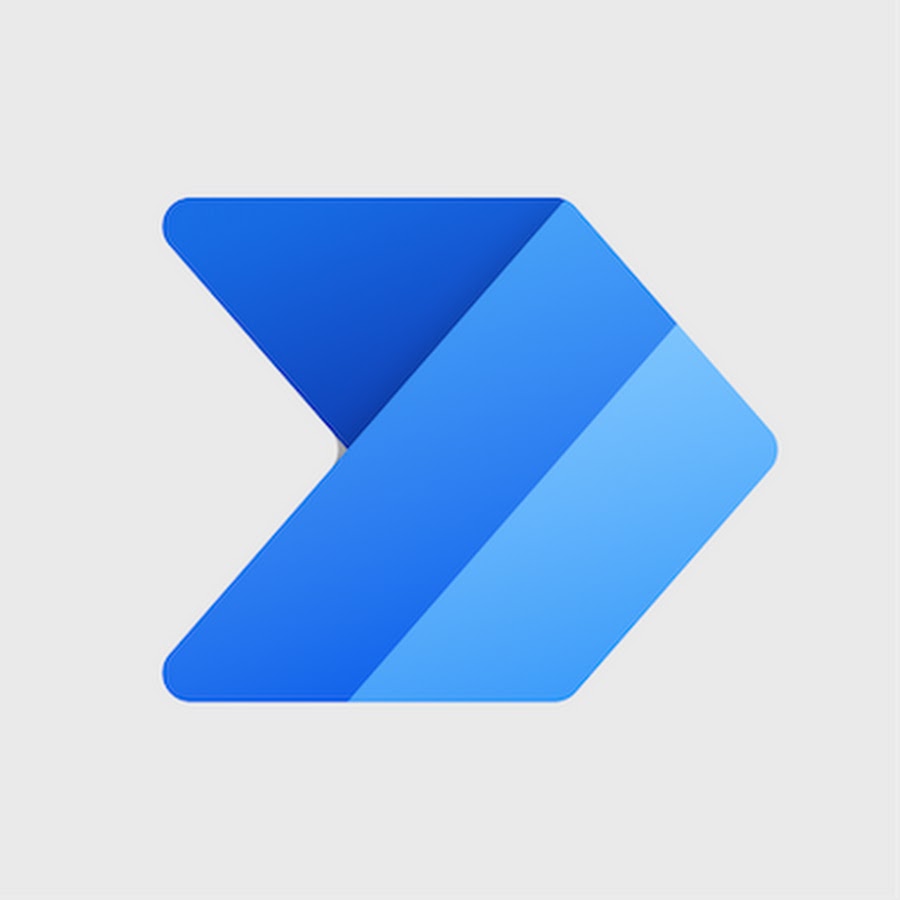

What is Power Automate?
Have you ever used a flowchart? Remember those? A set of steps with each block representing a question or an action. Start at the top and follow the flowchart and you’ll end up with a result. Power Automate is a lot like a digital version of that flowchart. You begin at the top with a trigger and follow through a set of actions until the work is done or you end up with a result.
A Power Automate workflow is called a flow and as of today (August 11, 2021) there are 520 different services that work with Power Automate. Each service is called a connector.
What are triggers?
A Trigger represents the start of a flow. In other words, it is the event that causes a flow to run. There are many different ways to trigger flows. They can be triggered by a submission from a website form, from changes in data, or even from measurements from IoT devices or the local weather. There are hundreds of triggers, each one offering a unique way to start a workflow inside of Power Automate.
What are actions?
An action is any step that happens after a flow is started. Actions can be used to update data in databases, such as Amazon Redshift or Dataverse. They can be used to send emails, or to create events, or send text messages. The usages for Power Automate are nearly endless and we encourage you to explore our Connector Review site to fully explore what’s possible.
There are however, special types of actions that don’t have a traditional connector, known as Built-in connectors. Some examples of these are variables and conditionals.
A variable action lets you define or update variables, which are just a named area that holds information. Variables allow you to use a placeholder for data so that you can simplify how flows are built or offer functionality that would be difficult without the use of a variable.
A conditional action lets you define different data paths, depending on an evaluation of the data. For example, the “if” conditional allows you to ask questions of your data, such as, “Did the user answer ‘Yes’ to a question” and direct the flow of the process in a different direction depending on what is evaluated. Conditionals allow your flows to perform different tasks when it’s necessary to treat some workflows differently than others.
Where is Power Automate going?
Power Automate is the heart of the No-Code/Low-Code platform. It’s what puts the Power into the Power Platform and helps companies save thousands of hours of work versus traditional development, when and only when, the requirements make it possible.
Power Automate will continue to add new connectors. We expect in 3 years time, there will be well over 2000 connectors available and some effort will be made by Microsoft to help builders of flows find and use the right connector and actions or triggers for their flows. Until maturity is reached, there will be some difficulty in sorting through all of the actions and triggers, but eventually this problem will be solved.
We expect Power Automate to be a big part of the Low-Code/No-Code movement as it represents a high level of abstraction that’s been promised for decades in computer science. It is only very recently that there is enough maturity across the internet to make something like this possible and we can’t wait to see what it can do.


What are Power Virtual Agents?
If you’ve ever seen a live-chat feature on a website, chances are it’s not backed by a human but by a chatbot that’s powered by a system like Power Virtual Agents. These systems are preferred by some users since they can be used without requiring the user’s full attention. Chatbots are simply apps that you use through a chat box on a website and Power Virtual agents make it easy to build apps that customers can use to help grow sales or service existing customers.
Power Virtual Agents can be deployed internally through an app within Microsoft Teams or globally through an embedded web app. Regardless of where they are deployed, the interface is largely text driven. Users can provide their own free-form text which can be categorized using AI, or options can be presented to help users use the chatbot.
Chatbots can integrate with Power Automate and this expands their function from simply a pre-programmed chat app into a full-featured interface for your data. Because Power Automate can interact with over 500 services, this means you’re able to build Virtual Agents that can perform meaningful actions, all while asking questions of the user and using their responses to guide the process. For example, you can build a chatbot that runs a report for management and have the chatbot ask all of the questions necessary to build the correct report. The library of actions in Power Automate makes this a very useful way to interact with your data.
Where is Power Virtual Agents going?
Microsoft has the resources to keep their platform competitive, which means as general AI becomes more feasible we can expect Microsoft to be able to improve Virtual Agents. These improvements will make the build process of Virtual Agents easier over time and more natural to use from the end-user perspective.
With improvements in this space, we foresee the ability of Virtual Agents to help guide employees towards the most important tasks to accomplish. Some care should be taken in deployments of this nature as we believe improper usage of this capability would have a negative impact on worker productivity and morale, both of which are important for long-term results.


What is Dataverse?
Dataverse is where Microsoft would like for you to store all of your company data. They want it to act as the “single source of truth” for your organization. But it’s much more than just a place to put your company data, largely because of the security and access control that’s layered on top of it.
Security and your data united together
Dataverse uses Azure Active Directory to manage access to your data, which is a fancy way of saying that all of your Microsoft licensing and application access controls can apply not only to the software people can access, but also to the data. This centralized security is attractive and one of the primary driving forces behind why you would use Dataverse. It means that you can apply security rules in one place and feel confident that those controls are applied equally across your entire IT infrastructure.
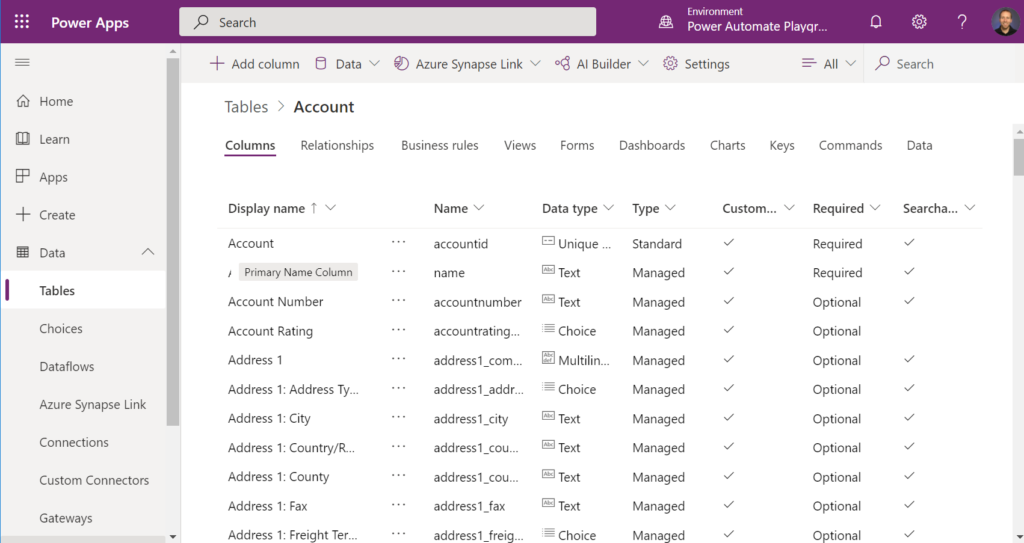
Data in Dataverse is stored inside of tables, each of which has one or more columns that define the sort of data gathered. Similar to what you may be used to with Excel, your actual data then is stored within rows inside of each table. Tables can be associated with data in other tables and, if smartly designed, all of your information can be stored efficiently and exposed only to those users who need it at the time they need it through Power BI, Power Apps, and Power Automate.
While the dream for Microsoft is that you would keep every bit of your data in Dataverse, this just isn’t realistic. To help you realize benefits for data that is not in Dataverse, Microsoft provides Dataflows, a service that helps you sync in data from outside sources into Dataverse. This service is essentially an ETL (Extract, Transform, Load) process that lets you connect outside data into Dataverse.
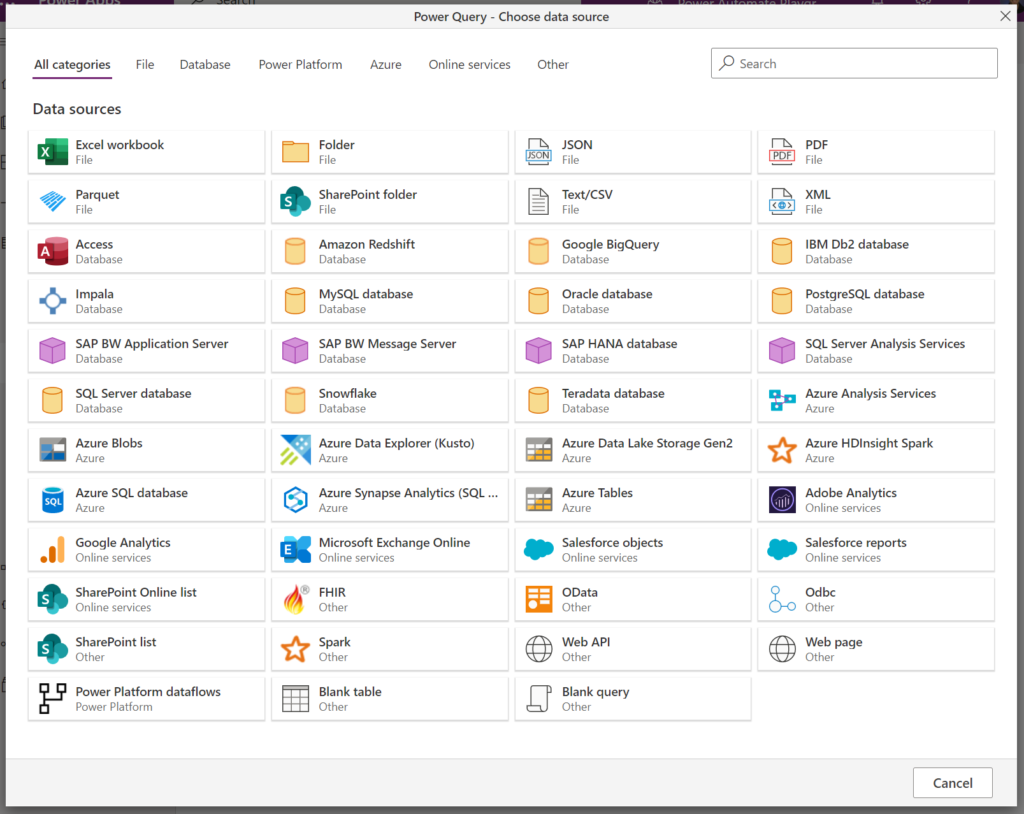
Where is Dataverse going?
Data is what gives companies value and Microsoft will want to give you the best platform possible for your data, so expect the platform to evolve to meet a wider range of data sources and needs. But the real focus and growth driver for Microsoft will be security. Security of your data is at least as important as the data itself and Microsoft knows that the centralized security provided through Active Directory provides a compelling competitive advantage. No other company can provide security from the OS level all the way through the apps and data.
Microsoft’s long history of dominance will show incredible leverage as firms battle with security breaches in the years to come. Every single major breach is another reason to centralize security controls like what can be done with Azure Active Directory. Arguably, this is a double-edged sword as it means a single breach of this platform would hold the keys to the kingdom, but at the same time all effort can be focused on securing a single asset.
Dataverse will be sold as a secure place to hold your data and time will prove this approach correct. Of course, if Microsoft were to ever experience a breach of Dataverse, the impact to the ecosystem would be catastrophic. No organization is immune, but it’s likely few organizations will ever experience the tests of security that Microsoft has seen, which you would think would mean the systems are quite battle-hardened.

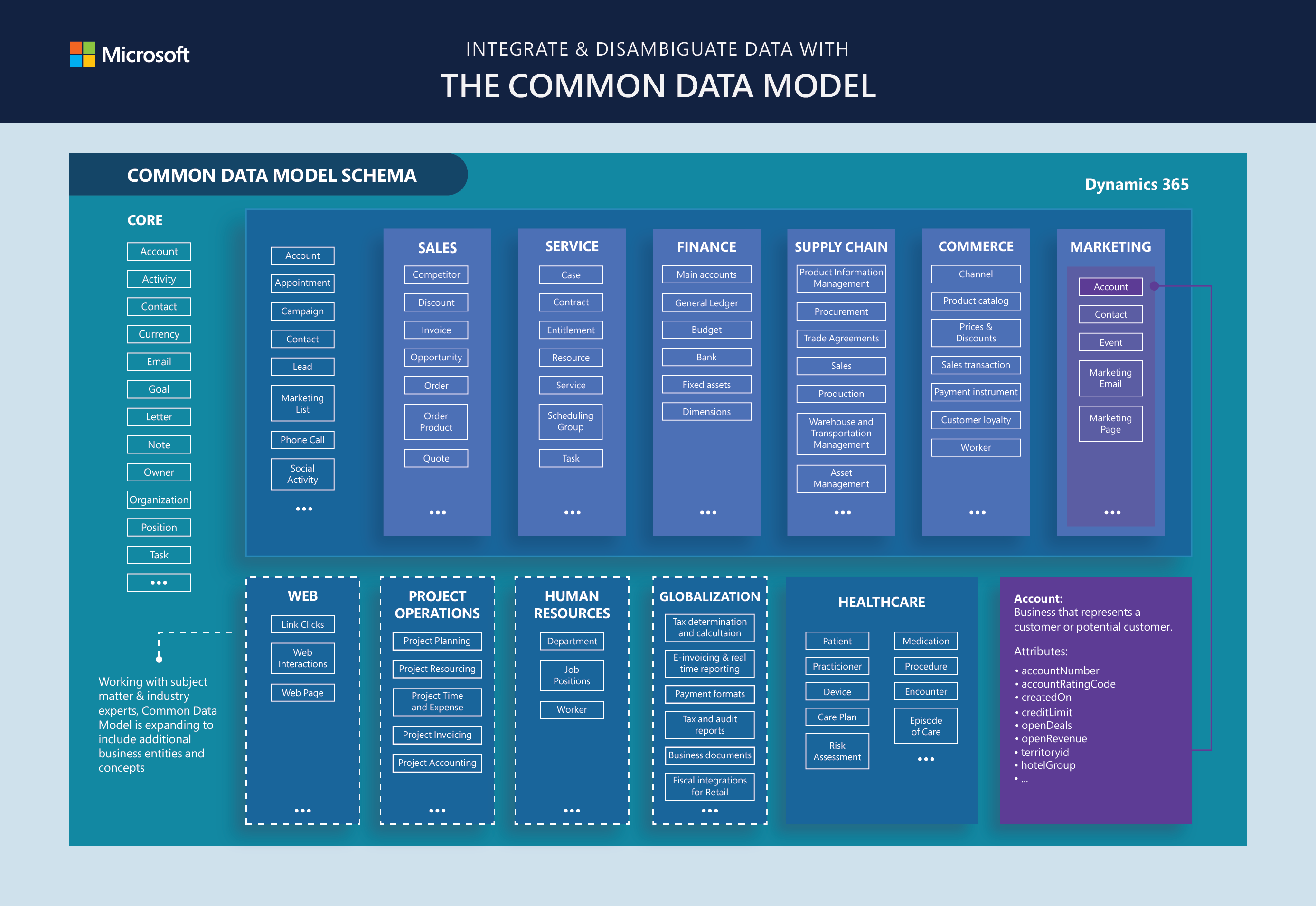
What is the Common Data Model?
Common Data Model is an agreement between different apps and systems about what is stored in each type of data record. In other words, it’s a template that says all Account records have a name, an account number, etc. It aims to provide sensible defaults that can apply across companies and industries and a standard set of tables and columns that other apps can depend upon. If you implement your data to use these defaults, you’ll immediately be able to use many different apps and automations to perform meaningful work with your company data.
But no two companies have the same data or the same structure of data. That’s okay. The defaults defined in Common Data Model aim to be a minimal set of shared attributes and you are free to extend (or ignore) the data structure as needed.
What does the Common Data Model mean to me?
The Common Data Model defines standards that can apply no matter the size of your company. If you expect growth in the future and you’re using the Common Data Model, all you will need to do is start using more of the Common Data Model as your business is ready for each component. For example, if you’re just starting with Dataverse you probably can get by without a Human Resources component for your data. Then, as you bring more parts of the business online, and start to see how digitizing Human Resources can produce benefits, you can simply take advantage of the data structures already defined by the Common Data Model. You would only need to populate your data into the places the system is ready to accommodate and immediately be able to use apps and features that are pre-built using the expectations set by the Common Data Model.
In other words, the Common Data Model provides a blueprint for growing your organization in a digital way without you having to re-invent how your data should be stored and how it works together. You utilize it when you can and take advantage of the benefits, and if your data doesn’t fit into the neat little boxes provided for you, then you’re free to build your own apps (but if you do this, you won’t be able to take advantage of pre-built apps and templates.)
Where is the Common Data Model going in the future?
It’s a pipe-dream to think that all businesses can be defined by a single data structure. We should expect the Common Data Model to grow more fragmented and more complex as it attempts to accommodate all of the different types of data that Microsoft sees with its large clients. If done correctly, this will mean that no matter the type of company you run, you will have a version of the Common Data Model that you can use, but scaling this product will be a difficult task.
We expect the Common Data Model to stick around. It’s a great concept that provides immediate benefits to companies willing to reshape their data to fit, but without strong, opinionated, leadership from Microsoft, it may see a slow degradation in benefits as it becomes harder to understand and harder to realize the same immediate benefits as the definitions grow to help fit more companies under the same data model.
We hope Microsoft will continue to pave a path here that puts the burden of fitting data into the data model onto the companies themselves. The greatest benefits from the Common Data Model come when the system does not try to fit everyone and instead focuses on providing benefits to those willing undertake the effort to fit their data into the structure. Following “the Microsoft way” of Common Data Model has the potential to align benefits, not only within your organization, but across organizations. The possibilities for two companies to interact when both are using the Common Data Model are very exciting.
Did you enjoy this article?
Would you like an evaluation of your current usage of Power Platform or some insights on what the future might hold for your business?
Fill out the form below with any questions or comments and we’ll be happy to help any way we can.
"*" indicates required fields

